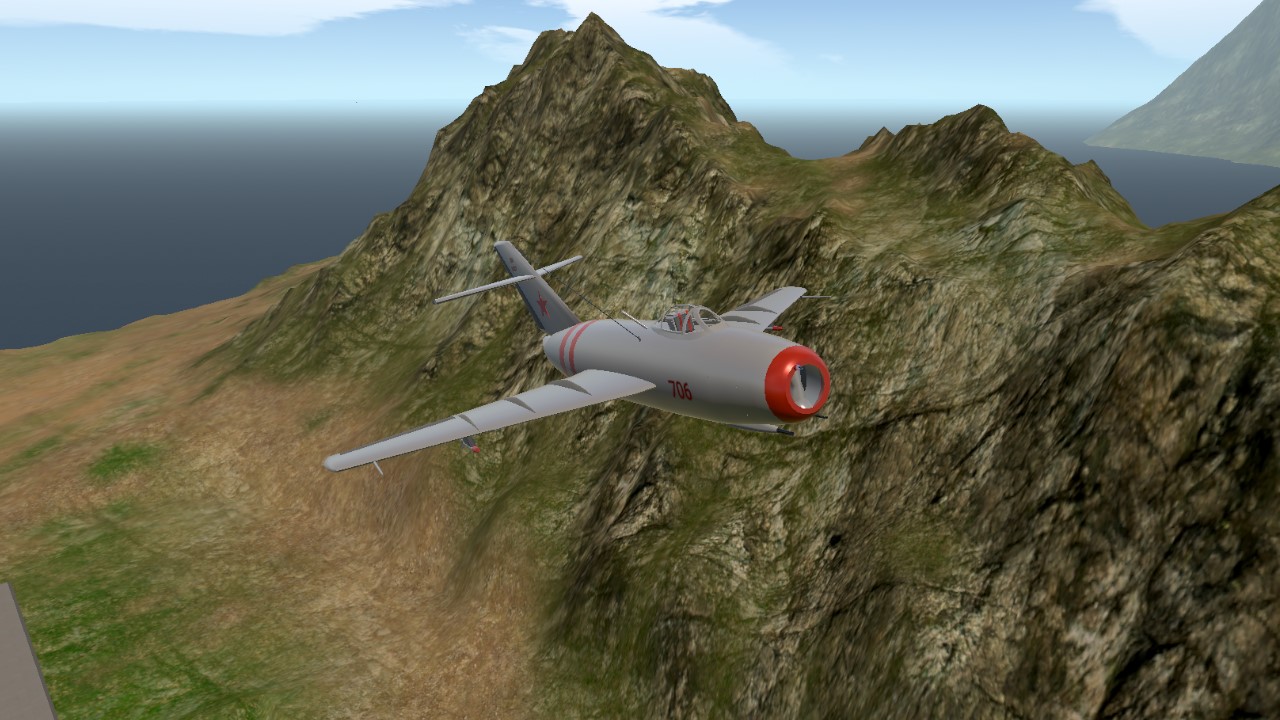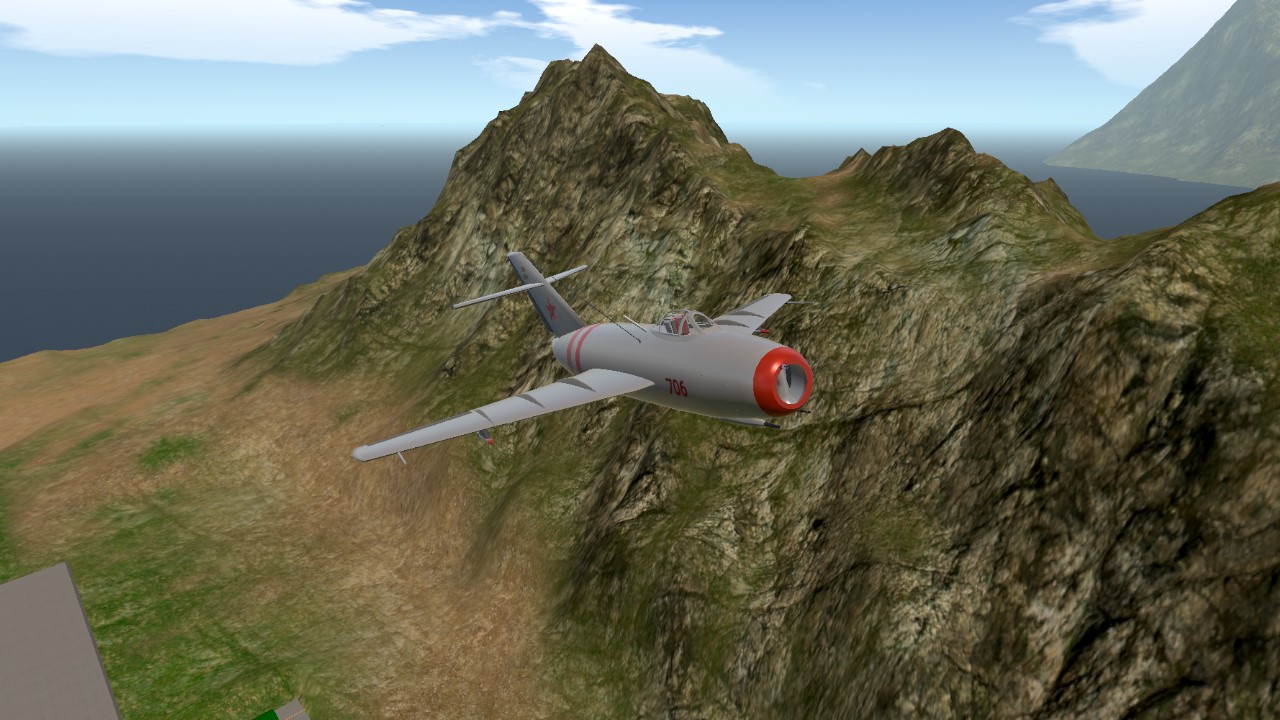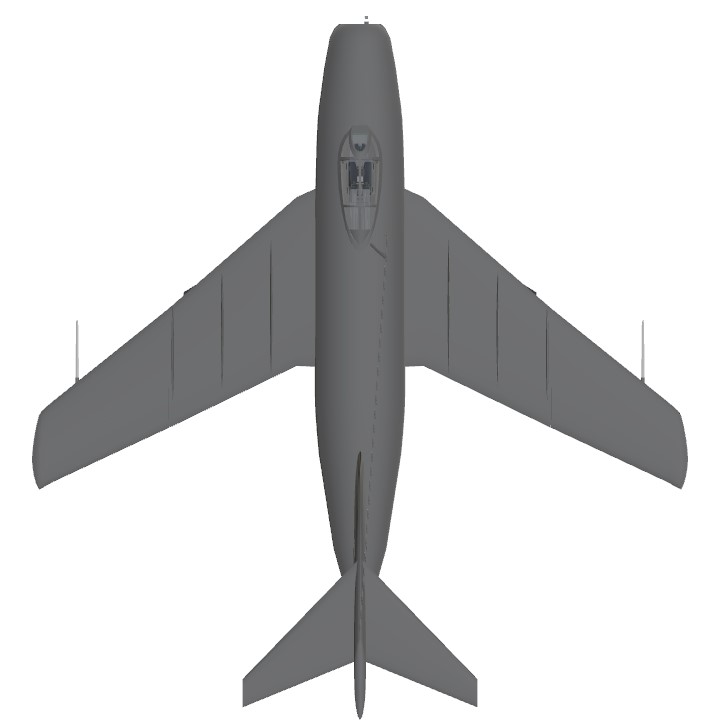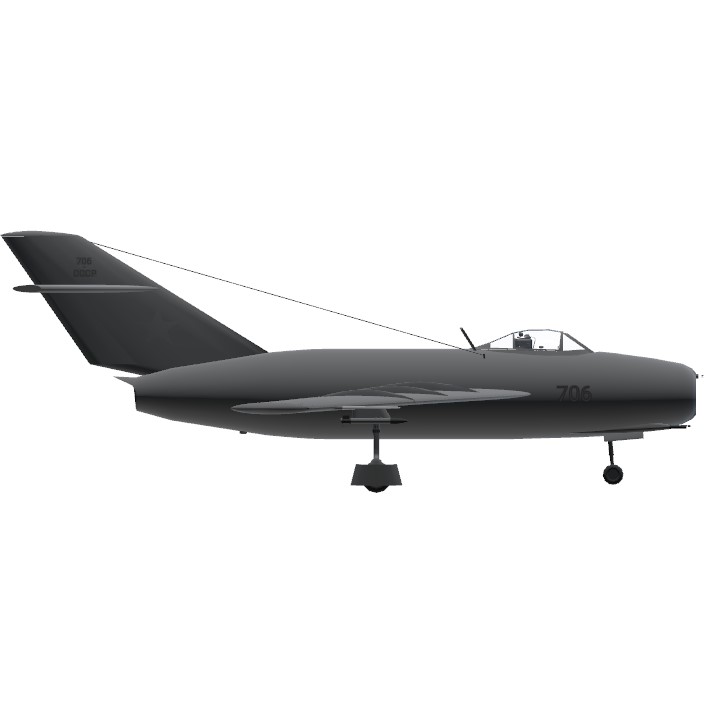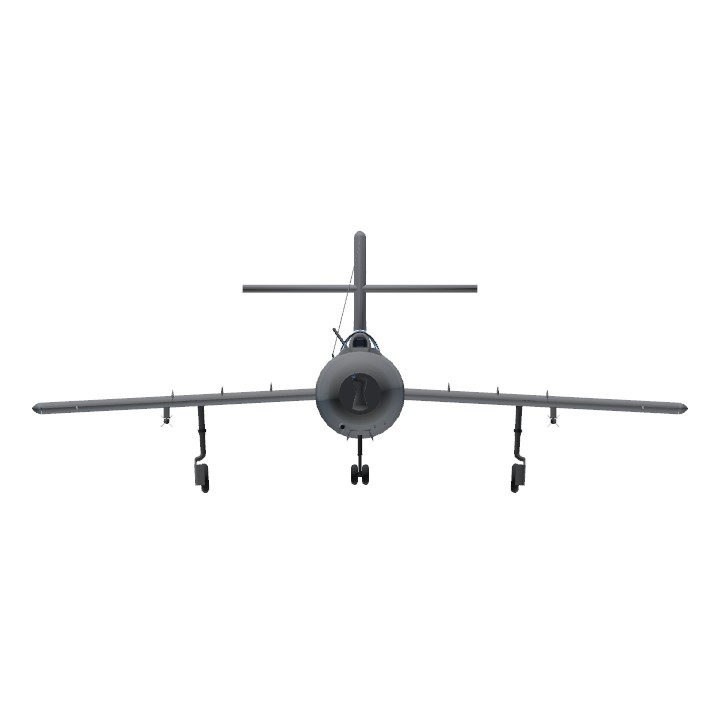Controls:
- 1 - Cockpit Toggler
- VTOL - Cockpit Angle
- 2 - Weapons System
- 3 - Gyroscope (If needed, just basic)
- 4 - Engine Aka. Powerplant in cockpit
- 5 - Enables/Disables Control Surfaces
- 6 - Ejection Seat
- 7 - /
- 8 - Everything Else
History
The MiG-15, a formidable adversary to the U.S. F-86 during the Korean War, shocked Western powers with its remarkable capabilities. In response to an urgent requirement for a high-altitude day interceptor, the Soviet Union designed the aircraft in 1946. By late 1947, it took its first flight. Notably, the MiG-15 marked the Soviet Union's initial utilization of the recently acquired Rolls Royce Nene and Derwent jet engines from Britain, which they promptly reverse-engineered and improved upon. This innovation led to the development of the RD-500, Klimov RD-45, and modified VK-1 engines, propelling Soviet jet technology to new heights.
Distinguished by its pioneering features, the MiG-15 incorporated the first-ever swept-wing design in production, a pressurized cockpit, and an ejection seat within a Soviet aircraft. Although Mikoyan and Gurevich were aware of German advancements in turbojet and swept-wing technologies, the MiG-15's design was entirely Russian with the exception of the engine. This particular version, the MiG-15bis, underwent a modification known as the Chinese Ji-2, which was also adopted by the Soviet Union.
Other
- Build time: 1 day
- Second time working with custom wings, worked out pretty well.
Specifications
General Characteristics
- Created On Windows
- Wingspan 35.6ft (10.9m)
- Length 39.1ft (11.9m)
- Height 14.0ft (4.3m)
- Empty Weight 5,049lbs (2,290kg)
- Loaded Weight 10,798lbs (4,898kg)
Performance
- Power/Weight Ratio 2.497
- Wing Loading 20.1lbs/ft2 (98.0kg/m2)
- Wing Area 538.2ft2 (50.0m2)
- Drag Points 6441
Parts
- Number of Parts 197
- Control Surfaces 0
- Performance Cost 902

